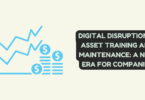
Craft an Effective Reward and Recognition System for Your Team
The significance of reward and recognition programs in businesses is a subject of much discussion and importance.
Reward and recognition programs for employees serve as a means for companies to acknowledge the efforts and accomplishments of their employees, which in turn can have a positive impact on employee morale, engagement, creativity, productivity, and employer-employee relationships, reduce staff turnover and ultimately improve overall company results.
There are three main types of reward programs; monetary rewards, non-monetary rewards, and incentive plans.
- Monetary Rewards: Monetary rewards are the most common form of rewards. This can include cash bonuses for meeting specific goals, salary increases, stock options, profit-sharing plans and other financial incentives. The critical aspect of this type of reward program is to clearly articulate the goals and timeline in which they need to be achieved in order for the employee to receive the reward.
- Non-Monetary Rewards: Non-monetary rewards offer an alternative means of incentivizing employees without the need for monetary compensation. This can include additional vacation time, flexible working hours, tickets or vouchers for events or experiences, professional development opportunities like training courses or conferences, and other gifts that do not involve money but still serve as an incentive for reaching specific goals.
When designing a successful program, it is important to keep in mind several key factors; the goals of the program, resources available for implementation, and meaningful rewards that align with the company’s values and mission statement.
- Goals of the Program: The goals of the program should be clear and attainable, reflecting the company’s values and mission statement. These goals should be measurable to track progress and evaluate success at key milestones. It is also important to take into account any external factors or regulations that may need to be considered when setting objectives for the program.
- Resources Available for Implementation: Once the goals have been established, the next step is to consider how they will be achieved within the available budget and resources such as personnel and technology infrastructure needed for implementation and program management. Allocating sufficient resources is crucial to ensure success, as inadequate support or funding can lead to an ineffective outcome.
- Meaningful Rewards That Connect To Company Values And Mission Statement: A well-designed rewards system that aligns with the company’s values and mission statement is key to motivating employees in any given program.
Developing an effective reward program involves several steps, including establishing clear criteria for rewarding employees, involving employees in developing reward criteria, and communicating program details to all employees.
- Establish Clear Criteria for Rewarding Employees: The first step in developing a successful reward system is to establish clear criteria for what makes an employee eligible for rewards such as bonuses or recognition awards. This criterion should be based on company goals and performance metrics such as attendance, customer service ratings, and sales volume.
- Involve Employees in Developing Reward Criteria: To ensure that employees’ needs are considered when deciding who qualifies for rewards and to give employees a sense of ownership in the program, it is important to involve them in the development of reward criteria.
Monitoring and evaluating performance is a crucial aspect of any successful project. It involves collecting feedback on program effectiveness, measuring performance against established goals, and making necessary adjustments as needed.
- Collect Feedback: To monitor and evaluate performance, it is essential to collect feedback on how well the program is working.
- Measure Effectiveness Against Goals: Progress should be tracked against established objectives over time to measure program effectiveness.
- Make Necessary Adjustments: Finally, necessary adjustments should be made as needed to ensure that goals set during the design phase are being met.
To summarize, reward and recognition programs for employees play a vital role in driving better results for businesses. With the right program in place, companies can improve morale, increase employee engagement, drive innovation, strengthen relationships, and reduce turnover rates. These programs come in the form of monetary rewards, non-monetary rewards, and incentive plans. When designing a program, it is important to consider the goals of the program, resources available for implementation, and meaningful rewards that align with company values and mission statements. The key to creating a successful employee reward program is to establish clear criteria for rewards, involve employees in developing reward criteria, communicate the program details to all employees, and monitor and evaluate performance regularly. By doing so, companies can incentivize and motivate their employees and achieve better overall outcomes.






